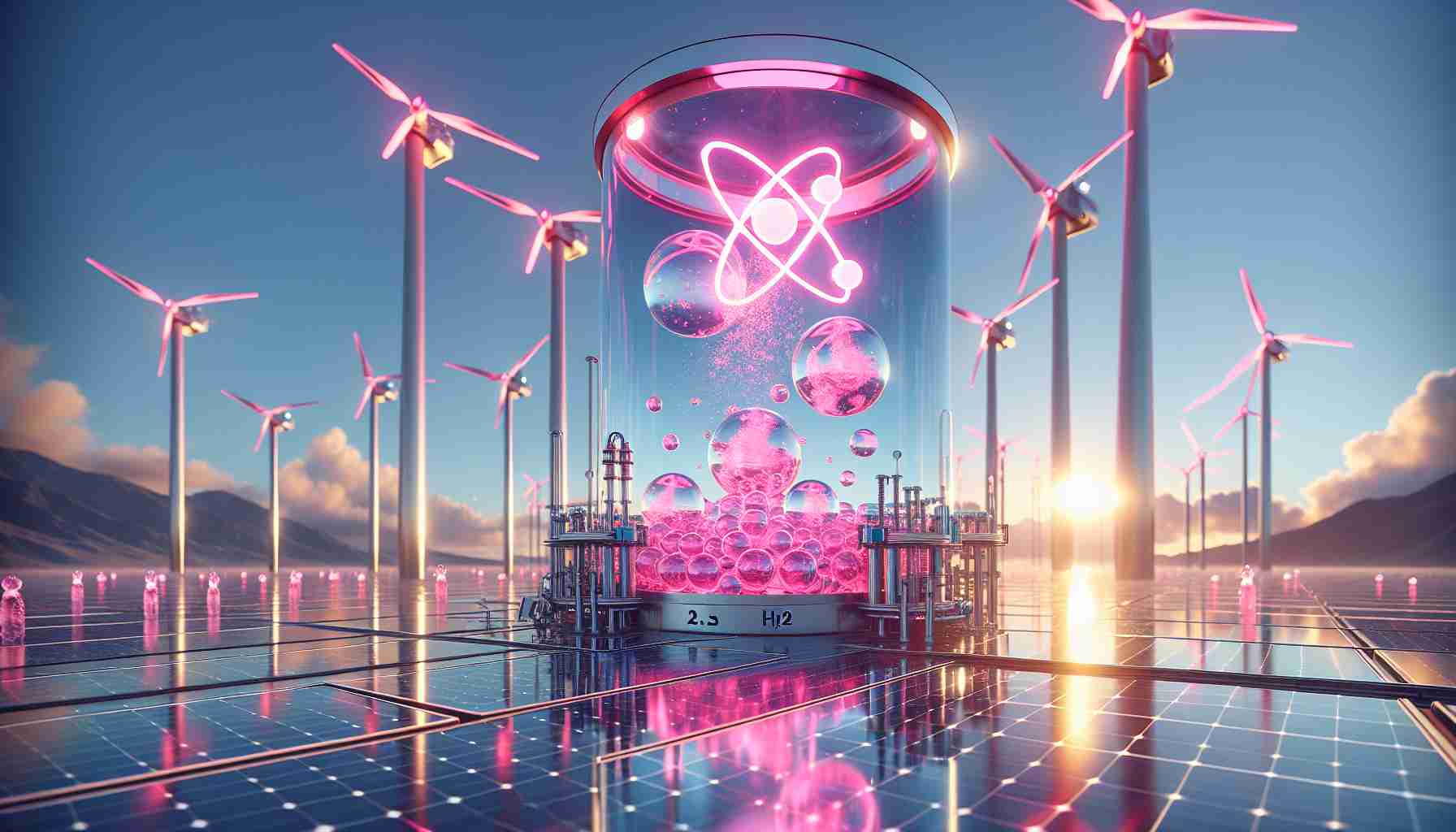- Pink hydrogen is produced through the electrolysis of water using nuclear energy, making it a carbon-free alternative to traditional hydrogen production.
- This method supports global decarbonization goals, significantly benefiting high-emission industries like steel, cement, and transportation.
- Investment in nuclear technologies, including small modular reactors, is driving the growth of pink hydrogen production, especially in Europe.
- Government initiatives in countries like France and the UK are aiding the expansion of the pink hydrogen market.
- Adopting pink hydrogen not only offers environmental advantages but also creates economic opportunities as industries transition to cleaner energy solutions.
As the world races towards a greener future, pink hydrogen is stepping into the spotlight as a game-changer in the energy landscape. Produced through the electrolysis of water using nuclear energy, pink hydrogen emerges as a carbon-free alternative that stands in stark contrast to traditional hydrogen production methods which rely heavily on fossil fuels. This innovative approach aligns perfectly with global decarbonization ambitions, proving essential for industries like steel, cement, and transportation—those notorious for their high emissions.
Investment in nuclear technologies, particularly with the rise of small modular reactors, is catalyzing a surge in pink hydrogen production, especially in regions steeped in nuclear capabilities like Europe. Governments are stepping up to support this shift, with recent projects in countries such as France and the UK propelling the pink hydrogen market toward exponential growth.
The message is clear: as we strive for a sustainable energy future, pink hydrogen stands at the forefront, embodying a significant leap toward reduced carbon footprints in energy-intensive sectors. The transition promises not only environmental benefits but also economic opportunities as industries adapt to cleaner methods.
With pink hydrogen leading the charge, the path to a sustainable future looks brighter than ever—keeping our planet thriving and our economies robust. The energy revolution is here, and it’s pink! Embrace this change, and stay informed as the energy landscape evolves.
Unleashing the Power of Pink Hydrogen: The Future of Clean Energy!
Understanding Pink Hydrogen: A Key Player in Sustainable Energy
As the energy sector evolves, pink hydrogen has emerged as a remarkable solution, produced via the electrolysis of water using nuclear energy. Unlike traditional hydrogen production methods that rely on fossil fuels, pink hydrogen offers a carbon-free alternative, making it crucial in the fight against climate change. This innovative approach not only aims to reduce carbon emissions but also matches global decarbonization strategies.
Key Features of Pink Hydrogen
– Production Method: Electrolysis powered by nuclear energy.
– Environmental Impact: Carbon-free and sustainable.
– Industries Benefitted: Steel, cement, transportation, and more.
– Investment Surge: Boost in small modular nuclear reactors facilitating pink hydrogen production.
Market Insights
The pink hydrogen market is experiencing significant growth, especially in regions with nuclear capabilities, like Europe. Government support through recent initiatives in France and the UK is propelling this market toward a potential boom, aligning with global emissions reduction targets.
Related Questions
1. What are the advantages of pink hydrogen compared to other hydrogen types?
Pink hydrogen’s primary advantage is its carbon-free nature, which makes it a cleaner alternative compared to grey hydrogen (produced from fossil fuels) and blue hydrogen (which captures emissions). This clean production method enhances sustainability, aligns with environmental regulations, and helps industries reduce their carbon footprints.
2. What role do small modular reactors (SMRs) play in pink hydrogen production?
Small modular reactors (SMRs) offer a flexible, scalable option for nuclear energy that can efficiently provide the necessary electricity for electrolysis. As investment in SMRs increases, the capacity for producing pink hydrogen grows, facilitating a transition to clean energy sources while maintaining energy security.
3. How does the pink hydrogen market fit into the global energy transition?
The pink hydrogen market is integral to the global energy transition, serving as a bridge toward a lower-carbon economy. With governments aiming for net-zero emissions, pink hydrogen supports this goal by providing an alternative energy source for sectors that are hard to decarbonize, ensuring energy production remains sustainable and economically viable.
Conclusion
As industries adapt to cleaner technologies, the rise of pink hydrogen marks a pivotal moment in the quest for a sustainable energy future. With ongoing government backing and technological advancements, pink hydrogen is set to play a critical role in not only reducing emissions but also fostering economic opportunities in the green energy landscape.
For more insights into the evolving energy sector, visit energy.gov.
